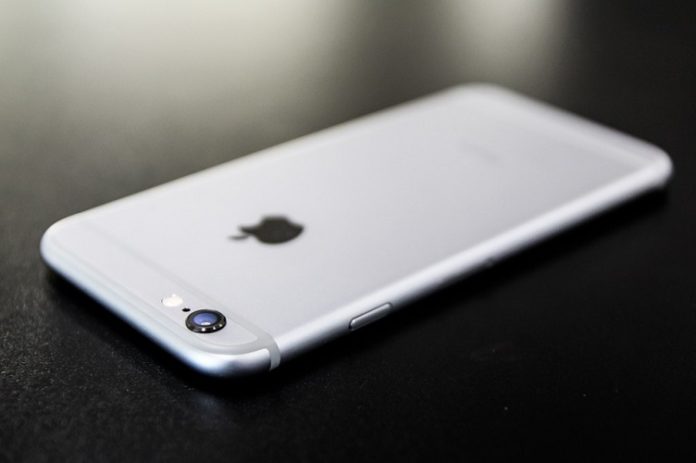
Yikes! Talk about not starting 2019 off on the right foot.
After briefly halting trading of its stock on Wednesday, Apple CEO Tim Cook shared a letter with investors revising the company’s guidance for revenue for the first quarter of 2019.
Cook pins the lower revenue projections on a number of factors, including “challenges in emerging markets” and “economic deceleration, particularly in Greater China,” as well as factors like “US dollar strength-related price increases” and customers choosing to replace their existing iPhone batteries instead of buying new iPhones.
Of course, there’s no one reason why Apple’s making less money. But it mostly boils down to pricing.
Simply put: new iPhones are too expensive, starting at $749 for an iPhone XR and $999 for an iPhone XS. And so, too, is every other product Apple sells, including the new iPad Pros, which start at $799, and the new MacBook Air at $1,199.
Maybe Apple pushed its “Apple tax” a bit too far this time around.
Apple tested how high it could push prices with the $999 iPhone X. At first, the move was greeted by a collective, “Are you nuts?” But then people acquiesced.
A thousand dollars isn’t an unreasonable amount of money for a device that does so much. While past quarterly earnings reports painted a clear picture that iPhone sales were down and had plateaued, the higher average sale price (ASP) per device helped offset reduced unit sales.
The narrative shifted from “Apple’s doomed because it’s not selling more iPhones” to “Relax, everything’s fine! It’s all gonna work out.” And it seemed that way for about a year. Now, however, things look more dire for Apple.
Steep discounts are never a good sign
It’s hard not to notice Apple’s rising prices.
As a reviewer, I still believe that even at $750, the iPhone XR is a great value (I put my money where my mouth is and bought one for my mom for Christmas!) But I understand it’s still a big chunk of money for some.
Monthly installment plans have no doubt helped soften the blow of the full cost of an iPhone by splitting the actual price into more manageable monthly payments.
But even so, many customers just don’t feel the need to upgrade to a new iPhone. Why get a new iPhone when their old one works just fine? I know tons of people who are still clinging onto their older iPhones. They like their headphone jacks on their pre-iPhone 7 devices. Their older iPhones run fine and even faster because of iOS 12’s improved performance features. They like their home buttons and Touch ID! A new battery fixes everything!
Here’s the thing: phones are mature devices now. Unless your phone’s on its last legs or you really need the most bleeding-edge device, a new iPhone isn’t essential. It’s kind of like a TV. Do you need a new TV every year? Absolutely not.
Reports claiming Apple had cut production for all the new iPhones, especially the iPhone XR, first suggested trouble in paradise. New iPhone XR owners seem to be mostly ex-Android users. But even those converts apparently aren’t enough to inject life into the iPhone XR’s sales numbers.
It was clear a more drastic measure was needed. So came the price discounts via older device trade-ins. It was unusual for Apple to offer up to $300 off a new iPhone. Though it seemed tied to a holiday push, analysts and pundits read it as iPhone prices being too high.
And now, Cook’s letter confirms it.
Trouble in Asia
Apple has struggled to replicate the same kind of success in emerging markets such as India as it enjoys in the U.S. India’s population of 1.8 billion is an untapped market booming with potential.
But the iPhone is just too expensive there. Estimates for the average Indian salary range anywhere from $10,000-20,000. Not a lot of people there can pay around 98,00 Indian rupees, which works out to about $1,400 USD (yes, iPhones cost even more in India than other markets), for a smartphone.
Lower incomes in emerging markets are a disadvantage for Apple’s premium-priced products, but not so for Android phone makers that produce significantly cheaper devices sold at half, a third, or even a tenth of the cost of the iPhone XS.
China is also an increasingly difficult market for Apple. Putting aside all of the political concerns and Trump’s trade war, China’s top phone makers are squeezing Apple hard with more dazzling innovations.
Apple may have been the first to do a near edge-to-edge phone right (notch notwithstanding), but companies like Huawei, Xiaomi, and Oppo, and OnePlus are plowing forward with devices that are truly nearly all-screen and no bezel.
The designs are unconventional — some devices employ features like a pop-up camera and sliding mechanism — but there’s no escaping the fact that these innovations are putting more heat on Apple.
For sure, most of these phones, especially Huawei’s, which are banned from officially being sold in the U.S., aren’t a threat to the iPhone in the United States. But in China, which basically operates in its own bubble with homegrown devices and services, the iPhone looks more foreign every day.
Who needs an iPhone when Huawei’s excellent Mate 20 Pro has more cameras, an arguably sleeker design, longer-lasting battery, and more?
Apple needs its next big thing
If the iPhone’s future is in question, then we have to look at what Apple’s next big thing will be.
Apple’s huge war chest can be traced back to the iPod. After iPod’s runaway success came iPhone. Along the way MacBook and MacBook Air grew into their own pillars. Then iPad.
But what will be the thing that pushes Apple above and beyond? It’s hard to say without being a fly on the wall in Jony Ive’s secretive design lab, but it’s not necessarily doom and gloom.
The Apple Watch has evolved into the product it always should have been from the start: a fitness and health-driven wearable device with cellular connectivity.
AirPods are another underrated product that continue to see growth. The wireless earbuds are frequently sold out and they’re seemingly in everyone’s ears. I mean, two years after they launched, people who are just getting them are blown away. Imagine people losing their shit over a two-year-old product. But AirPods are accessories to iPhones. They may sell well and be Apple’s most explosive new product, but they’re not even in the same league as the iPhone.
HomePod? It’s a great-sounding smart speaker, but it has failed to match the affordability and intelligence of competing smart speakers from Amazon and Google.
Apple has stressed how its booming services category — which includes iCloud and Apple Music — continues to grow. And certainly, Apple seems to have a lot up its sleeve for Apple Music and even the streaming video service it’s reportedly building out. But neither of these is what Apple does best: hardware.
Without some kind of revolutionary new hardware, Apple is heavily reliant on the success of the iPhone. It’s the iPhone company.
iPhone sales aren’t going to evaporate over night — the phone’s here to stay for a long time — but each hit from competitors is going to sting a lot harder. A new must-have product would take a lot of the pressure off the iPhone.
Maybe that product will be the AR/VR smart glasses/headset rumored to launch as early as 2020. Or maybe it’s whatever Apple’s developing with all those recent self-driving engineer hires.
Who can honestly know besides Tim Cook and Jony Ive?
A much more obvious fix might be something simpler: Just lower iPhone prices. But that would also mean Apple would have to sell more iPhones and that’s just not happening now that everyone has a working phone.
And so Apple’s future will probably hinge on a new product. The question is whether it’ll be clutch or not.
Source: Mashable
























